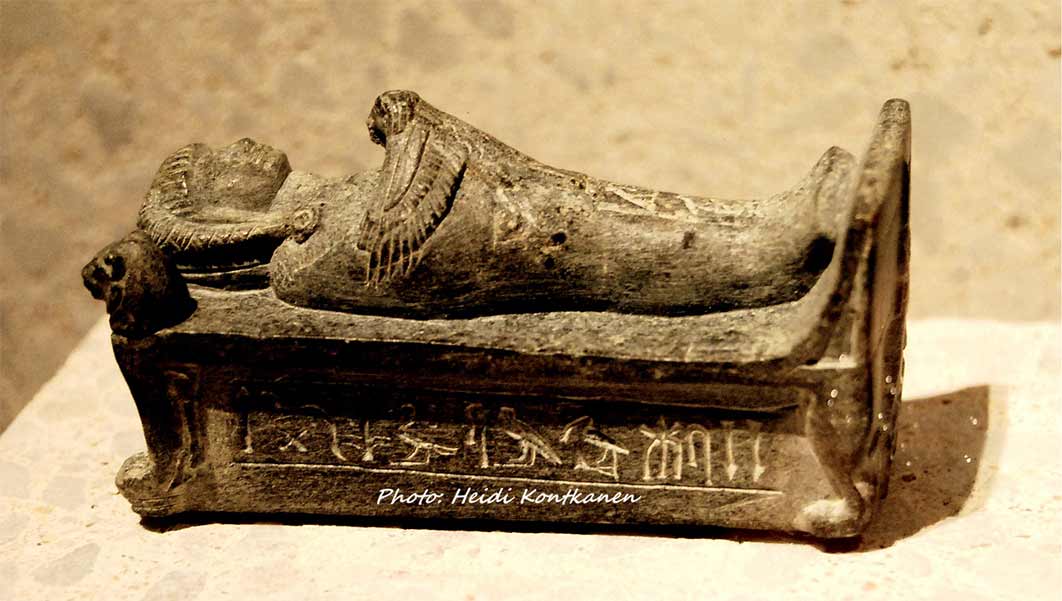
On The Trail Of The Mysterious Crown Prince Thutmose: Clues To A Sudden, Violent Death? – Part II
In addition to making Crown Prince Thutmose high priest of Ptah, Amenhotep III probably prepared his intended successor in the ways of Aten worship too. This was a thread later picked up by Akhenaten, who as Prince Amenhotep IV had a palace at Heliopolis, a city situated near Memphis and associated with the sun cult. The future heretic was doubtless deeply influenced by solar philosophy whilst there.
Sometimes scholars wonder if the course of Egyptian history would have turned out differently had the enigmatic Thutmose, the original royal heir, not predeceased Amenhotep IV? Would he have introduced his version of the Amarna Period? Even if that were true, he likely may not have operated with the sheer swiftness and scale witnessed during Akhenaten’s execution of Project Aten.

This schist statuette of Crown Prince Thutmose, brother of Akhenaten, depicts him on a bier with a Ba bird on his chest. He is shown as a high priest of Ptah at Memphis and wears a wig and sports a sidelock. The inscription reads: “The King’s Son, Sem Priest, Djhutmose”. Neues Museum, Berlin. (Heidi Kontkanen)
Objects Of An Ill-fated Heir
The disputed whip from KV62 aside, some amount of information about Prince Thutmose can be positively gleaned from a few objects directly attributed to him, such as his schist funerary bier at the Neues Museum, Berlin that shows him recumbent with a ba bird upon his chest.
The figure wears a wig and sports a sidelock, which in this instance is not indicative of youth but a symbol of the god Ptah. The inscription on the sculpture’s base reads: ‘The King’s Son, Sem-priest, Djehutymose’.
Unearthed in a cemetery near the modern town of Mit Rahina the limestone sarcophagus of Thutmose’s pet cat Ta-miu (she-cat), at the Egyptian National Museum, Cairo, is another well-known artifact associated with him.

Limestone sarcophagus of the cat of Thutmose. He predeceased his father and his younger brother, Amenhotep IV, assumed the throne instead. Egyptian National Museum, Cairo. (Courtesy of www.meretsegerbooks.com)




